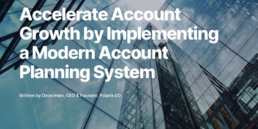The sales system we follow today was created in the 1800s – it’s time to modernize!
I have been writing about the value of enterprise accounts for a couple of months. In this series of articles, we have covered how:
- Enterprise accounts, given their vast outsized spend, can drive large scale growth.
- Different elevations of desired outcomes create multiple paths for growth.
- Navigating customer agreement networks effectively improves success.
- Aligning capabilities to executive buyer needs helps them envision working with you.
- Being in rhythm with customers given your relationship type with them is key to longevity.
The current Go-to-Market sales model can trace its roots back to the late 1800s when John Patterson first pioneered sales management techniques for National Cash Register (NCR). Creating “an intricate system of management to monitor and train company salesmen,” John created sales scripts and territories, held conventions, and had contests as well as assigned quotas and paid commissions. There was a defined sales process for a defined market – all the stores in every town needed to keep track of transactions, taxes, receipts, and sales so they needed a cash register.
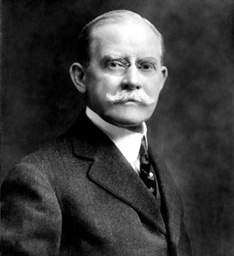
Think of how familiar all of that is to the way sales is managed today. The sales model hasn’t changed in over a century except for automation! It is now 2021! And we live in an experience economy in which digital disruption can change markets overnight by providing a better customer experience. All one needs to do is look at Amazon, Uber, Airbnb, and Netflix to see what they have done to disrupt retail, transportation, hospitality, and entertainment in order to get a real sense of what is now possible. Add in the disruption of COVID-19 and what it means for commercial real estate, the new reality of working from home, or even what entertainment and sporting events look like going forward, and you can just imagine the next disruptive business or technology that will change what was in the blink of an eye.
Shift Your Mindset, Embrace the Conflict
We live in a constant state of change and innovation now. There are no longer “fixed markets” with well-defined supply and demand curves that have a long-term duration. And where they still exist, they can change quickly and without warning. This is what your customers are facing on a DAILY basis. They have to anticipate the unexpected, so they look for partners that will help them figure these things out and adapt to new ways of addressing the threat of accelerated digital disruption. Those who help customers innovate to mitigate threats and problems will thrive in today’s accelerating digital economy while those who rely solely on the hope of uninterrupted product demand will feel the pain of being on the wrong side of disruption and become obsolete, quickly – just ask Blockbuster or Kodak.
The difference between Go-to-Market and Go-to-Customer is primarily a mindset in how you work to relate to customers. Go-to-Market is response and service focused, where Go-to-Customer is focused on leveraging the collective strengths of your organization to align with a customer’s constantly changing needs.
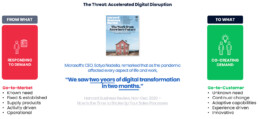
Responding to demand (Go-to-Market) is focused on operating efficiency. It is based on a supply and demand activity-based model where there is a known market need. Go-to-Customer views sales and marketing as an investment in co-creating demand for growth, in partnership with customers. It is based on adapting to continuous change through innovation.
Investing in growth is different than allocating costs to sell a certain number of units based on a linear sales model and forecast equation. Co–creating demand is focused on working collaboratively with customers to create new ways of continuously addressing problems to drive results long term. Go-to-Market is designed for new customer acquisition in pre-defined markets, where Go-to-Customer is designed for growth through the exchange of economic value within a commercial ecosystem. A modern commercial system leverages both.
Mirage or Reality?
The metrics of responding to demand are enslaving companies by perpetuating a mirage that predictable demand is real. Think about what CRM systems are monitoring. Salespeople input data on tasks and opportunities for management to forecast sales revenue. Does a CRM system really capture an accurate picture of what will sell, or when? In my experience, it is a waterfall of perpetual self-deception that flows down from executive expectations through a sales lens that is highly subjective (and for which there is no standard, so a sales manager’s subjective views are overlaid on top). This is all wrapped in the tedious, repetitive, and error prone exercise of inputting sales activities vs. customer needs week in and week out at the high cost of selling time – which is the time needed to spend time with customers in the first place!
If this approach worked, it would be efficient and predictable – but it’s not. The global pandemic has revealed to many organizations that a “reality distortion field” exists within their own CRM systems. Companies create this by relying on sales to provide all of the input data as though they control the pipeline. Sales doesn’t control the pipeline; your customers do because they are the ones who write the checks. Unless customers are providing verified confirmation about where they are in the buying process, it is like trying to take a picture of a mirage over and over again.
What is real is the power of innovating to co-create demand with customers. It is predictable in the sense that when you envision success with executives early on, you can win 75% of the time. Customers are, well, customers and have predictable buying patterns and expressed preferences for suppliers that work with them. And once you are in rhythm with them, they will continue to do business with you, expanding your contracts over time in a predictable way. And they love to partner with companies that work with them to solve their problems and drive their results.
In the last article, Be in Rhythm with Customers to Expand Enterprise Accounts, I highlighted different types of economic relationships. The left side of this relationship diagram represents responsive or accommodative revenue relationships with customers who simply want to buy individual products to complete tasks or aggregate their purchases to get more for less. The revenue relationships on the right are where Go-to-Customer methods of innovating to solve problems or drive results pay big dividends.
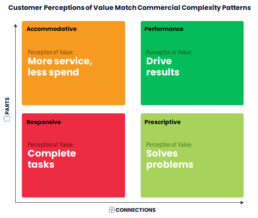
There are in fact two different sales methodologies needed here – the historical model of responding to demand and a new Go-to-Customer model for a digitally disrupted experience economy requiring businesses to co-create demand with customers. Since 80% of revenue typically comes from 20% of enterprise key accounts and enterprise accounts outspend all others by an order of magnitude that is incredibly significant, it is logical that companies spend time focusing on co-creating demand with key accounts that matter.
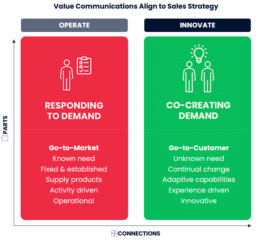
Modernizing Your Sales System for Balance
Building out an approach for systematically creating economic value for key accounts is important to any modern sales system.
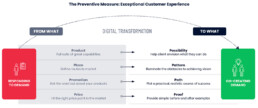
Modernizing your commercial system is critical to being positioned for growth in the 21st (vs. 19th) century. Digital transformation is forcing companies to focus on efficiency and to begin to look at sales and marketing as an investment in customer innovation – and it is important to invest in the customers that can drive perpetual growth for your business – this is the value of enterprise accounts.
Move from metrics that enslave your business in responding to demand to metrics focused on co-creating demand where customer spend analysis, customer perceptions of your business, and their stated problems are mined for continuous innovation. Begin to innovate a new way of doing business with enterprise accounts vs. being enslaved by a sales model over-rotated to new customer acquisition activity. A balanced approach will change your growth trajectory.
The key to differentiation in the modern world is experience. Watch our webinar Go to Customer: Markets Don’t Write Checks, Customers Do to learn more about the digital transformation journey to possibility, pattern, path, and proof.
Dave Irwin
Founder + CEO of Polaris I/O
Dave has 30 years of experience in B2B as President, GM, CMO, and CSO. He is recognized as an AI, marketing, and sales enablement expert. He is also a growth leader with a strong history of innovation.
Related Posts
The Business Case for the Commercial Insight Strategist: Unlocking Growth with Precision
In enterprise sales, growth is often…
The Commercial Insight Strategist: A Key Asset for Key Account Teams
Imagine a key account team working…



